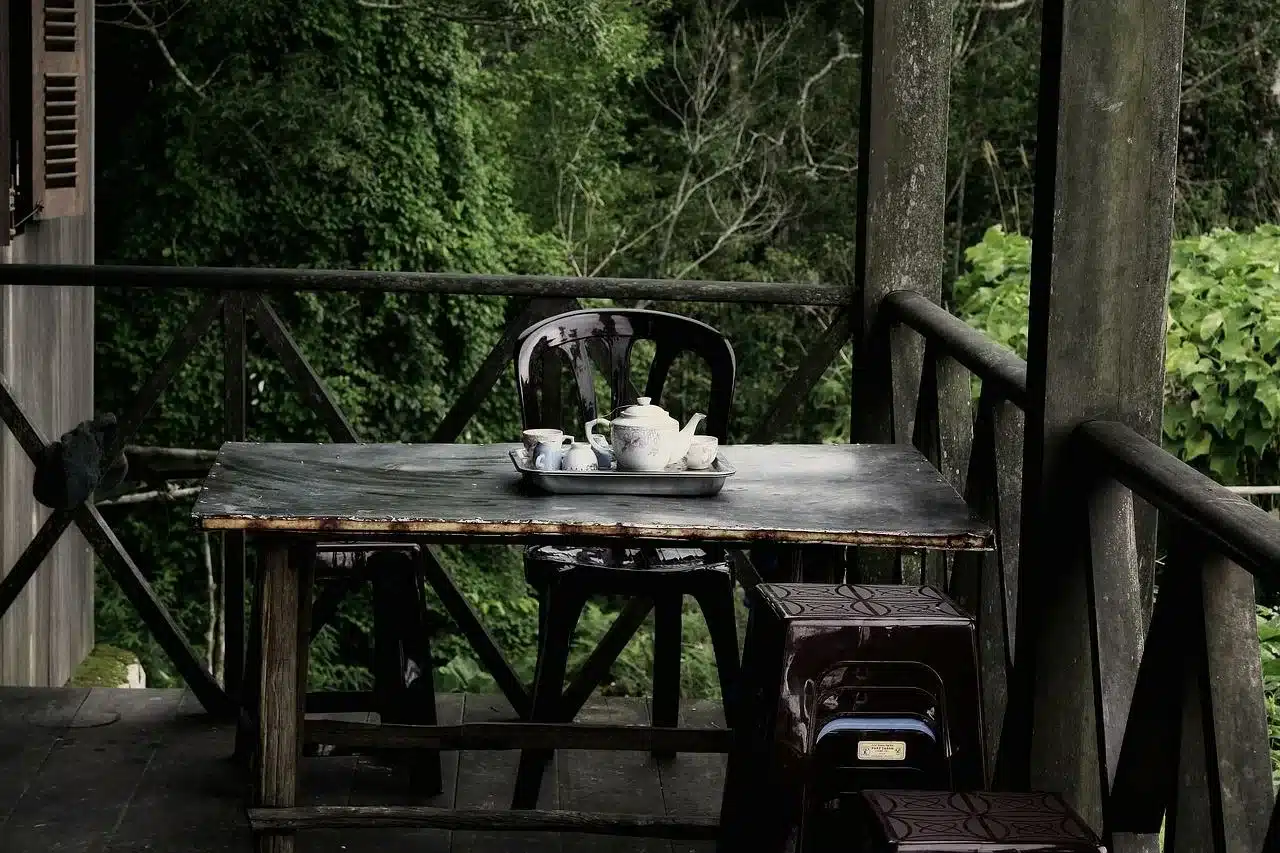French Antique and Modern Furniture January 29, 2022 – Posted in: Furniture – Tags: antique, french, french antique, french empire, french modern
French Empire furniture is characterised by its visual power. Coinciding with Napoleon’s conquests of Europe, it brings a slice of his empire into every room it adorns. Here at Denzilla, we want to inspire you to connect the treasures of that period with contemporary pieces and ideas.
Empire pieces do not have to be intimidating. Indeed, they can become a natural part of the modern home in combination with contemporary or vintage pieces. Whether you are looking for a single accent piece to tie a room together, or are starting afresh, the selections from our catalog are sure to inspire you.
In today’s blog, we will journey through the history and characteristics of Empire furniture, introducing you to pieces from our collection along the way. And, as always, we’ll attempt to paint you an inspiring picture of how you can combine those pieces in unique, tasteful ways.
If you’re looking to redesign one room, in particular, be sure to check out these guides on home office decor, ideas for your bedroom, and festive dining room design. Or check out all the ways you can warm your winter home with rustic décor ideas.
The Roots of Empire Furniture
Empire Furniture was directly impacted by the Neoclassical trappings of the late 18th century Louis XVI style. Coinciding with the Enlightenment, Louis XVI found order and elegance in history. It features columns, hard angles, and pompous features that are less whimsical than in the earlier Baroque style.
Empire furniture translates those traits into a grandiose style that suggests imperial glamour and power, while remaining dismissive of the tenants of royalty that marked the styles of the previous century.
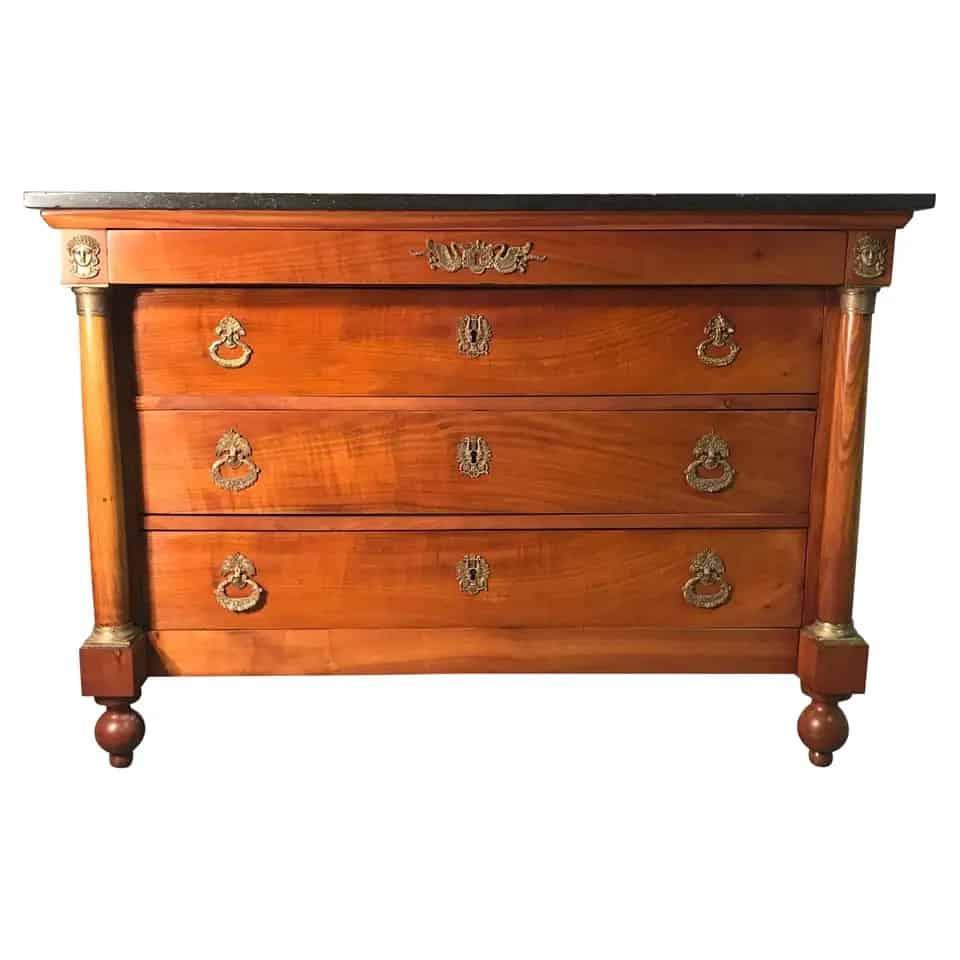
An elegant Chest of Drawers, like this piece, is the perfect embodiment of what defines Empire furniture. The elegant black marble top connects simply with the natural wood of the dresser. Grecian columns line the drawers, and metal mounts lightly adorn the piece.
Unlike Baroque furniture, which is characterised by heady swirls and heavy gold décor, Empire furniture is much more muted, features sharp angles, and is far easier to integrate into a modern home.
In the case of this chest of drawers, it’s not difficult to imagine the dark marble top in combination with Art Deco or Bauhaus pieces, let alone a contemporary leather chair, for instance.
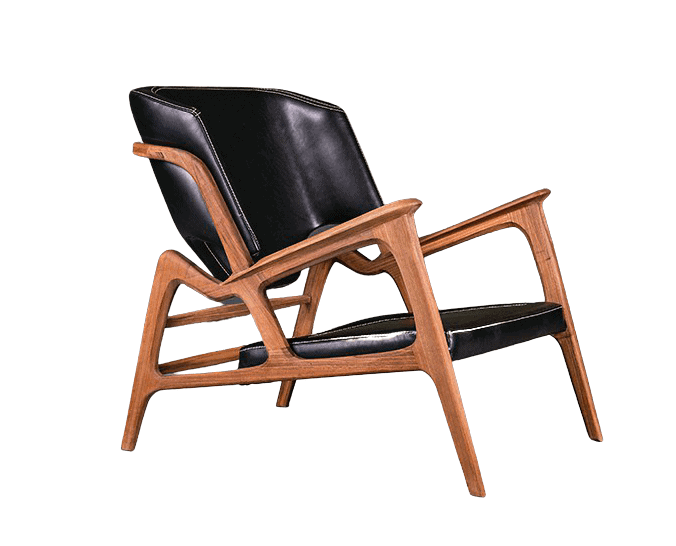
This European Designer chair is an excellent example of a contemporary design piece that’s practically meant to go with the lovely commode.
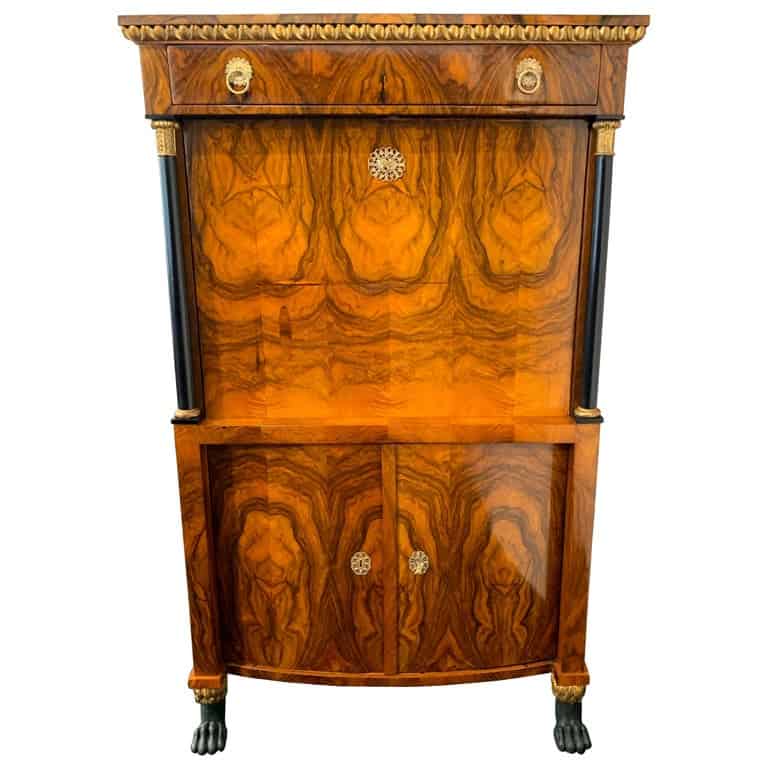
A piece like this Secretary Desk also remains understated but incorporates some more whimsical decorative features, like the distinctive feet and golden crowning rim. Viennese takes on Empire furniture tend to be more ornate, owing to the tastes at the Habsburg Court.
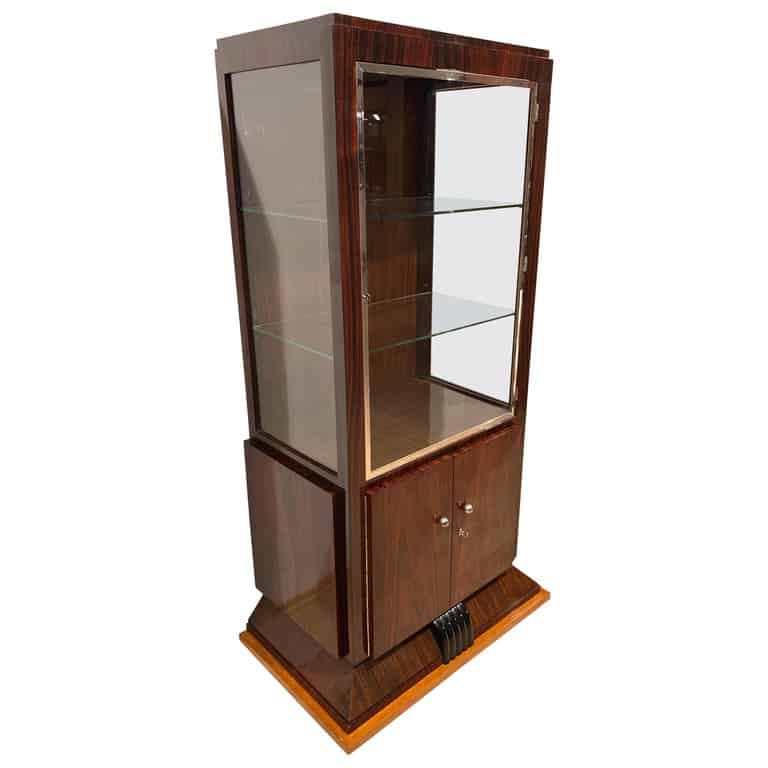
It’s not difficult to imagine that piece in combination with this Art Deco vitrine, for instance. Featuring a remarkably similar foot-like feature in its base, the vitrine also features wood tones that seem to connect perfectly with the century-older secretary desk.
Feel free to combine pieces of other periods at will. After all, the defining feature of any well-decorated interior is your own taste reflected in it.
Accent Pieces
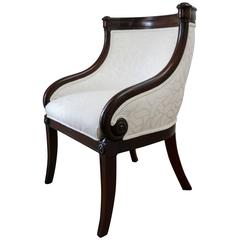
It doesn’t take a large piece of furniture to add a taste of Empire to your interior. In fact, with as small a piece as this Empire Tub Chair, which recalls the shape of a Roman chaise and simultaneously features a gorgeously modern look thanks to its updated fabric, you can change an entire space.
Contrast is king. In fact, using dark woods and light fabrics is a surefire way to effortlessly combine all kinds of periods. That aesthetic is part of the core tenants of contemporary design, Art Deco, and Empire furniture.
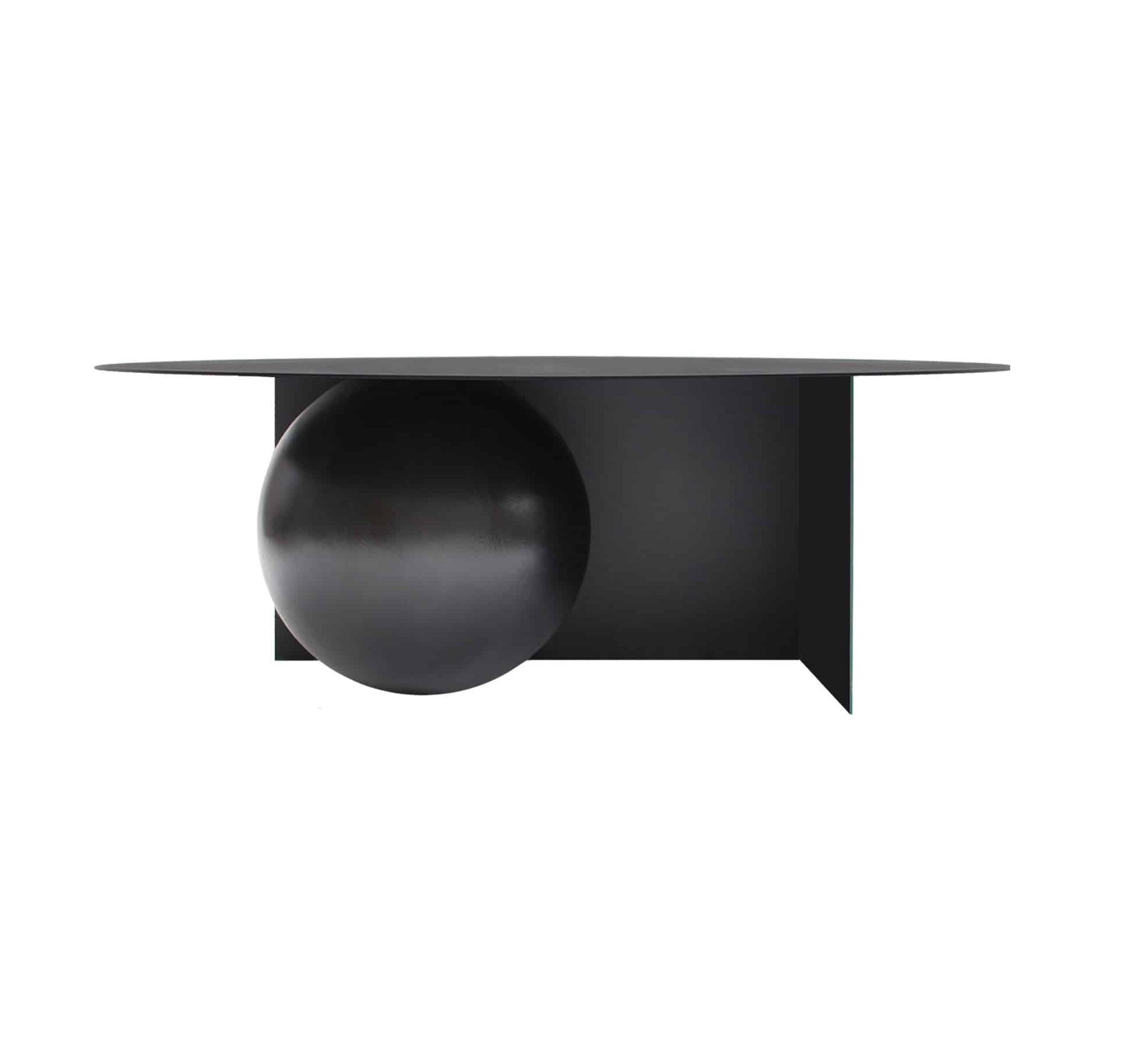
Combine the chair in a seating arrangement with a designer piece like this contemporary coffee table for a winning, transcendent aesthetic.
After Empire: The Rebirth of the Baroque under Napoleon III
After the end of the Napoleonic era, French furniture found new gilded elegance coinciding with the revival of the monarchy. In the later part of the 19th century, the last monarch of France, Napoleon III, inspired the Napoleon III style, which re-incorporated some of the more ostentatious elements of the Baroque from a century before.
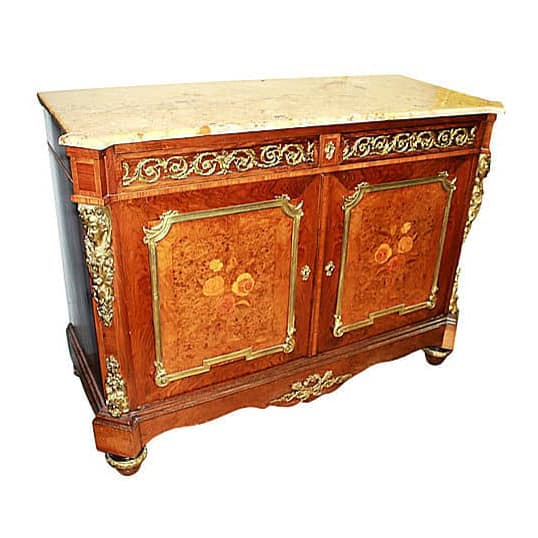
This Buffet Server is a classic example of French furniture from the second half of the 19th century. Much more whimsically decorated than Empire furniture, it encapsulates the desire for potent glamor under Napoleon III.
Note the ormolu gold features adorning every side of the commode. From the feet to the facing, gold spouts from every corner. That glamour would soon give way to much simpler forms.
Indeed, the Napoleon III period inspired the subsequent Art Nouveau period only in subtle ways. Elegance became about material excellence. Wood became the focus of beauty. Gold elements played an increasingly smaller part in decor. And, slowly, industrial elements crept into furniture design – if only subtly at first.
A Style Between Worlds
In more ways than one, French Empire furniture is a style emblematic of a turbulent political moment. As monarchies fell and empires rose, perceptions of power and status changed. By adding a piece of empire furniture to your interior, you are creating space for elegance and sophistication, without overwhelming contemporary sensibilities.

